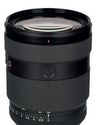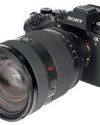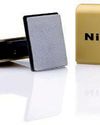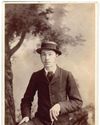
Towards the end of the 1980s, camera sales began to decline. The reasons were twofold. First, compact cameras had become so hi-tech that, with the exception of interchangeable lenses, single lens reflexes (SLRs) didn’t have much more to offer. So photographers stopped following the traditional route of moving up from a compact to an SLR. That led to a fall-off in SLR sales. Secondly, the fact that the average compact did so much meant that there seemed little point in upgrading to newer models when they hit the market. Which led to a fall-off in compact sales as well.
What was required was a new breed of camera to entice punters to start buying again. It needed to have the versatility of an SLR, though not necessarily reflex viewing, with the ease of use of a compact. And so the 35mm bridge camera was born. Today, most are still usable, and many are super-cheap! For reasons about to become apparent, however, stay clear if you are left-handed.
1987: Yashica Samurai X3.0 GUIDE PRICE: £80-120
Although an unusual shape, the Samurai is a 35mm SLR that shoots half frame 18x14mm images, 72 to a roll of 36-exposure film. It looks like a small camcorder, used one-handed, the index finger of the right hand falling on the shutter release as the other three fingers slip into an indentation in the body for a firm grip.
The 25-75mm f/3.5-4.3 lens zooms at the touch of a toggle switch, a flashgun pops up above the lens, programmed exposure is automated with shutter speeds of 2-1/500sec. Film wind is motorised, and there's a self-timer plus a date/time printing facility.
Denne historien er fra December 12, 2023-utgaven av Amateur Photographer.
Start din 7-dagers gratis prøveperiode på Magzter GOLD for å få tilgang til tusenvis av utvalgte premiumhistorier og 9000+ magasiner og aviser.
Allerede abonnent ? Logg på
Denne historien er fra December 12, 2023-utgaven av Amateur Photographer.
Start din 7-dagers gratis prøveperiode på Magzter GOLD for å få tilgang til tusenvis av utvalgte premiumhistorier og 9000+ magasiner og aviser.
Allerede abonnent? Logg på

Calling The Shots: A Queer History of Photography
Offering an unprecedented view of photographic history through a queer lens, this is a wonderful and powerful book, says

Large-aperture standard zoom, too
SONY has also revealed a new premium standard zoom, the FE 28-70mm F2 GM.

Super-fast, high-res Sony Alpha Ai II
SONY has announced its new professional full-frame flagship camera, the Alpha A1 II.

39 awesome accessories
Our round-up of the best accessories we've used and reviewed this year, along with some old favourites. There's something here for every budget, starting from just £7, including tripods, bags, filters and much more

Such a thing as society
This autumn sees the launch of a major new book and exhibition devoted to examining the multiplicities of photography during 1980s Britain. Peter Dench finds out more

Join Club
The sociable Canvey Island Photographic Club is keen to grow its in-person meet ups

Capturing flight
Winners and finalists of Bird Photographer of the Year share their tips for success with Hollie Latham Hucker

140 years of change
AP has become the world’s oldest surviving consumer photo magazine because we have moved with the times, says Nigel Atherton

Preserving history in platinum
A deep dive into the meticulous art of platinum printing, and the collaboration between the Royal Geographical Society and Salto Ulbeek. Mike Crawford explores how they brought historical photographs to life with enduring beauty and precision

Life in the past lane
What was life like for an amateur photographer in 1884? John Wade takes a trip back in time